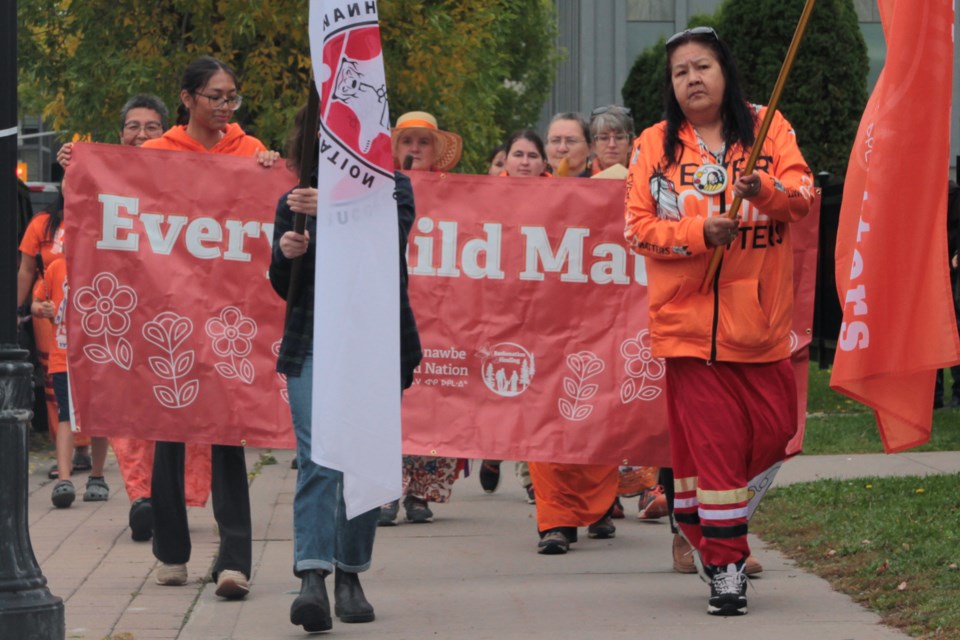THUNDER BAY — It’s been 76 years since Ida Ralph was first taken to an Indian residential school, but those memories still remain.
The 81-year-old was one of the speakers at an event organized by Nishnawbe Aski Nation marking Orange Shirt Day on the National Day for Truth and Reconciliation on Saturday.
The event began with a march from the NAN office on the corner of Donald Street and Syndicate Avenue and proceeded to Vickers Park, while passing the St. Joseph’s Indian Residential School memorial site.
Ralph, who said she was originally from the Fort Hope area, was sent on a train with her younger sister in the middle of the night to the McIntosh Indian Residential School northeast of Kenora in 1947. Ralph was four years old, her sister was only two.
That first year was spent “in a room upstairs,” Ralph described, with the two each having a crib to sleep in and they didn’t leave the room.
Once she started classes, she came to learn to read and write in English, which she said was worth it, because speaking Indigenous languages would result in punishment.
“If I spoke my language, then the teacher would hit us on the fingers or hit us on the ear,” Ralph said. “No Indian, no Indian.”
Those years at residential school left Ralph spending a significant portion of her later life overcoming what she called her “shyness,” after she said she was constantly told at the schools that she wouldn’t amount to anything.
She overcame addictions, and the loss of her sister in 1983, and has helped act as an interpreter for Indigenous people needing to access services, like social workers, in English.
Shirley Sutherland, another survivor, said there were 10 children in her family and all went to residential school. When she was five years old, she was put in a float plane with four of her siblings and five other children and flown to Fort Albany.
"As I looked, crying, banging on plane I could see my parents getting smaller and smaller," she said.
After arriving at the school, all of the siblings were separated, Sutherland added.
"After that, we hardly got to see each other even though we were there. We weren't allowed to hug each other," she said.
Though many years have passed, Sutherland said the difficult memories can come rushing back.
"Even when you're on your healing, every day things, I still get triggers, especially when I hear a float plane," she said.
Nishnawbe Aski Nation Grand Chief Alvin Fiddler said the day makes him think of his late sister.
“She attended residential school when she was small and was one of those students that never really came home,” he said. “I only met her twice in my life and died in B.C. — that’s where she’s buried. I think about her and others that never made it home.”
Earlier this week, Kiiwetinoong MPP Sol Mamakwa rose at Queen’s Park and shared his personal experiences attending residential school.
In the speech, Mamakwa urged the government to take action to combat residential school denialism.
Fiddler said while the National Day for Truth and Reconciliation can help spread awareness and education about residential schools, those efforts can’t just be limited to one day.
“Orange Shirt Day is important but the work needs to continue all year round, including in our school boards, including all service organizations,” he said.
“We do need to fight the deniers out there that say Indian residential schools were good. That’s not true. We need to take every opportunity we have to take time to hear from the survivors.”
